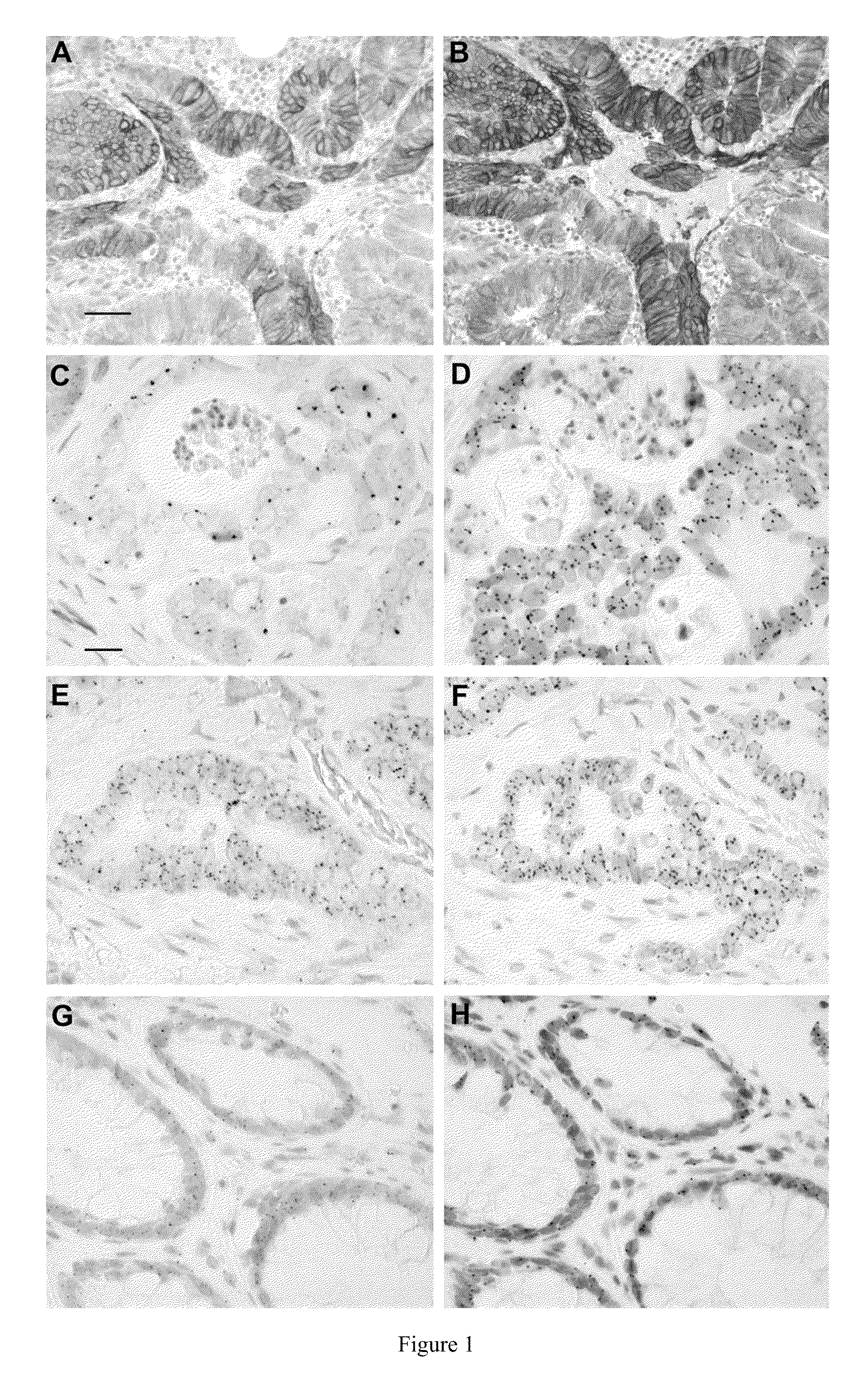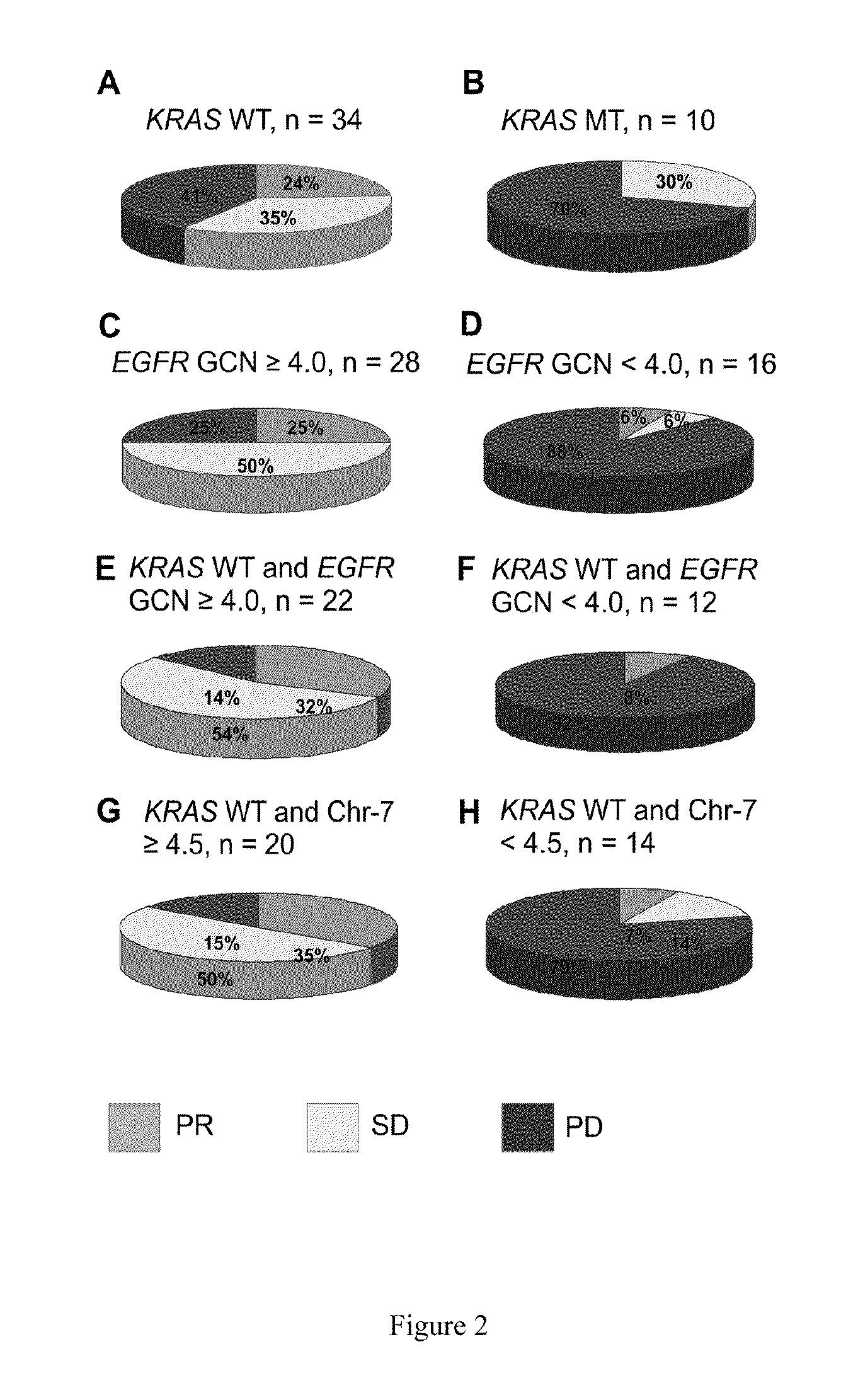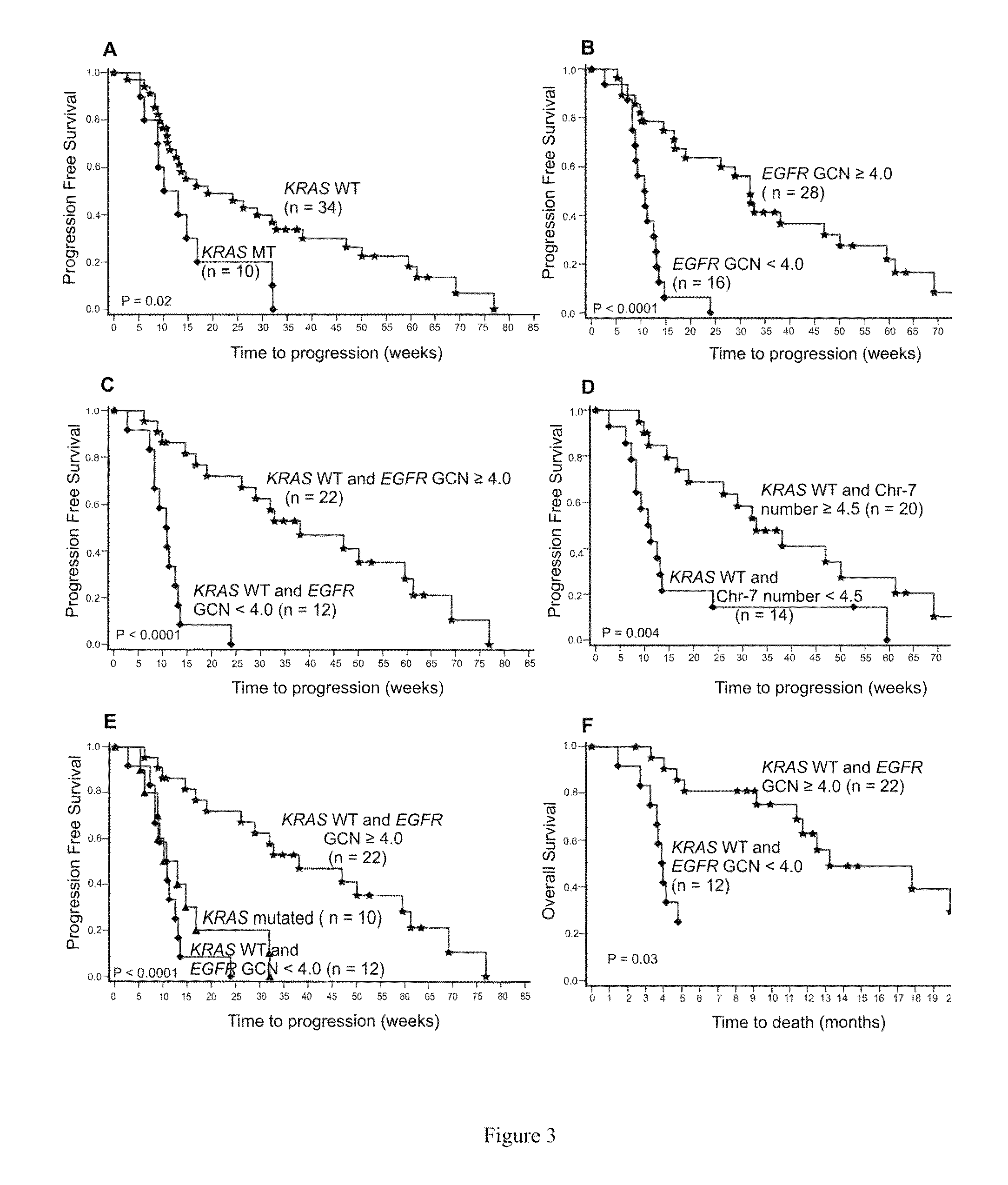Method for selecting patients for treatment with an EGFR inhibitor
a technology of egfr inhibitor and patient selection, which is applied in the field of cancer diagnostics and therapies, can solve the problems of difficult interpretation of fish results, ineffective treatment of patients, and inability to meet the needs of patients, etc., and achieves the effect of improving the safety and efficacy of treatment and reducing the risk of side effects
- Summary
- Abstract
- Description
- Claims
- Application Information
AI Technical Summary
Benefits of technology
Problems solved by technology
Method used
Image
Examples
example 1
[0133]Patients and Methods
[0134]Patients and Ethics
[0135]This retrospective study comprises a series of 74 metastatic or locally advanced colorectal carcinoma patients, 49 of whom were treated with anti-EGFR therapy at the Turku University Hospital. Fifty-one percent of the patients had metastatic disease already at the time of diagnosis. The median age of the patients at diagnosis was 60 years (range, 35 to 73). Patient characteristics and treatments are presented in Table 1. The treatment response could be reliably evaluated for 44 / 49 (90%) of treated patients. Ten of the treated patients had a mutation in the KRAS gene due to the fact that anti-EGFR therapy was administered prior to establishment of the predictive value of KRAS testing. The response to anti-EGFR treatment was evaluated by computed tomography (CT) or magnetic resonance imaging (MRI) according to the Response Evaluation Criteria in Solid Tumors (RECIST) (Eisenhauer, 2009). The study was conducted in accordance with...
example 2
[0136]KRAS Analysis
[0137]Formalin-fixed, paraffin-embedded samples with at least 30% of CRC cells were selected and analyzed for KRAS point mutations within codons 12 and 13 with the D×S K-RAS mutation kit (D×S Ltd, Manchester, UK).
example 3
[0138]IHC
[0139]Three μm sections were stained with two monoclonal antibodies against EGFR (VentanaMedical Systems / Roche Diagnostics, Tucson Ariz.). EGFR (clone 3C6) mAB is directed against the extracellular domain of human EGFR, and EGFR mAb (clone 5B7) against the internal domain of human EGFR. Stainings were performed with BenchMark XT (Ventana / Roche) using ultraVIEW Universal DAB Detection Kit (Ventana / Roche). EGFR IHC was scored independently by three observers (OC, JS, ML) blinded of the clinical information. Three scoring parameters were recorded: the highest (covering at least 10% of tumor area), the most common staining intensity, and the localization of staining (membranous, cytoplasmic or both). Four categories of staining intensity were used: 0 (negative), + (1+, weak), ++ (2+, moderate) and +++ (3+, strong / highest, similar to intensity of basal layer of the epidermis). In cases of discordance, a consensus score was used.
PUM
| Property | Measurement | Unit |
|---|---|---|
| thick | aaaaa | aaaaa |
| molecular weight | aaaaa | aaaaa |
| thick | aaaaa | aaaaa |
Abstract
Description
Claims
Application Information
 Login to View More
Login to View More - R&D
- Intellectual Property
- Life Sciences
- Materials
- Tech Scout
- Unparalleled Data Quality
- Higher Quality Content
- 60% Fewer Hallucinations
Browse by: Latest US Patents, China's latest patents, Technical Efficacy Thesaurus, Application Domain, Technology Topic, Popular Technical Reports.
© 2025 PatSnap. All rights reserved.Legal|Privacy policy|Modern Slavery Act Transparency Statement|Sitemap|About US| Contact US: help@patsnap.com



